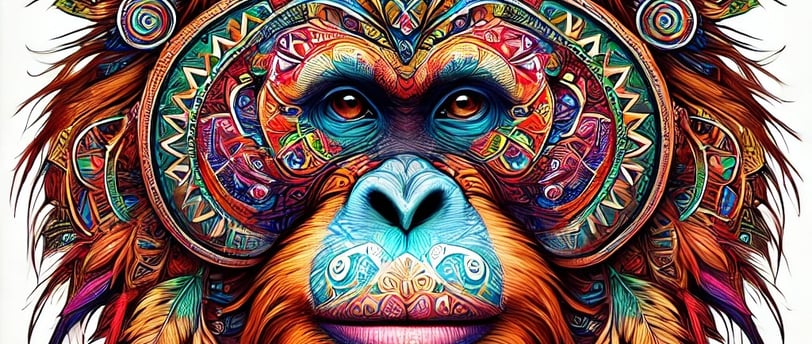The Therapeutic Effects of Coloring: A Pathway to Relaxation and Stress Relief
Coloring is much more than a pastime for children; it is a valuable activity that offers a variety of therapeutic benefits for adults. By promoting mindfulness, reducing anxiety, and providing an avenue for emotional release, coloring serves as a powerful and accessible method of stress relief.
SCIENCE
Camapa Editorial
11/2/20243 min read


In the modern world, stress and anxiety have become common challenges that many individuals face. Amid the demands of work, personal responsibilities, and the constant influx of information, finding ways to unwind has become more important than ever. Interestingly, a practice rooted in childhood—coloring—has emerged as a powerful tool for promoting relaxation and reducing stress. This simple activity, often associated with children, has proven to offer a range of mental health benefits for adults as well, contributing to a more peaceful state of mind and overall well-being.
Coloring as a Mindful Activity
Coloring has been likened to a form of meditation, often referred to as "mindful coloring." When individuals focus on filling in intricate patterns and choosing harmonious colors, their attention naturally shifts away from daily concerns and anxieties. This focus allows the brain to relax by centering thoughts on the present moment, akin to mindfulness practices that encourage individuals to let go of intrusive thoughts. In essence, coloring channels energy towards a creative pursuit, enabling an escape from the stressors of everyday life and fostering a sense of calm.
The Science Behind Relaxation Through Coloring
Scientific research supports the claim that coloring can reduce stress and anxiety. Engaging in this creative activity is known to stimulate the amygdala, the part of the brain that deals with emotions, while simultaneously allowing the prefrontal cortex—responsible for rational thought—to relax. This interplay of cognitive functions effectively mitigates the "fight or flight" response often triggered by stress, and replaces it with a state of tranquility. Studies have shown that even short sessions of coloring can significantly lower cortisol levels, the hormone linked to stress, leading to a physiological reduction in stress markers.
Additionally, the rhythmic and repetitive motions involved in coloring contribute to activating the parasympathetic nervous system, which helps to calm the body and reduce heart rate. Much like other creative activities, coloring helps to induce a meditative state, promoting relaxation and a deeper sense of well-being.
Emotional Expression and Creative Release
Coloring also provides an opportunity for emotional expression without the need for words. Selecting colors and freely experimenting with various hues allows individuals to channel and release emotions that may otherwise be difficult to articulate. This creative process can serve as a form of emotional release, offering comfort and a sense of control in times of uncertainty or distress. For many, coloring helps process emotions and promotes a positive mood, making it an effective outlet for coping with overwhelming feelings.
Impact on Focus and Mental Health
Furthermore, coloring enhances concentration and boosts focus, which can indirectly relieve stress. The act of staying within the lines, working with detailed patterns, and making decisions about colors all contribute to improved cognitive function. These elements require gentle but sustained focus, making it easier for the mind to relax and leave behind the stresses of the day. As individuals engage with the coloring process, they often experience a break from their usual thought patterns, which can be especially beneficial for those suffering from anxiety and overthinking.
Coloring Books for Adults: A Growing Trend
In response to the growing recognition of the mental health benefits of coloring, the market for adult coloring books has flourished. These books often feature elaborate and sophisticated designs, such as mandalas, nature scenes, or geometric patterns, which cater to an adult audience looking for relaxation tools. The popularity of these coloring books points to an increasing appreciation for activities that cultivate mindfulness and creative engagement as alternatives to more conventional stress-management techniques.
Conclusion
In conclusion, coloring is much more than a pastime for children; it is a valuable activity that offers a variety of therapeutic benefits for adults. By promoting mindfulness, reducing anxiety, and providing an avenue for emotional release, coloring serves as a powerful and accessible method of stress relief. As people continue to navigate the complexities of modern life, the simplicity and effectiveness of coloring make it an ideal practice for fostering relaxation, creativity, and overall mental well-being. Whether practiced alone or in a group setting, coloring can bring about a sense of calm that many find invaluable in their pursuit of balance and inner peace.
Camapa Editorial
camapaeditorial@gmail.com
© 2024. All rights reserved.
Our mission at Camapa Editorial is to explore, analyze, and present insights within these fields in a way that both educates and inspires further inquiry. Whether delving into groundbreaking scientific discoveries, examining the intricacies of athletic performance and emerging sports, or exploring the multifaceted world of entertainment, Camapa Editorial aims to be a trusted guide in your journey of learning and exploration.
